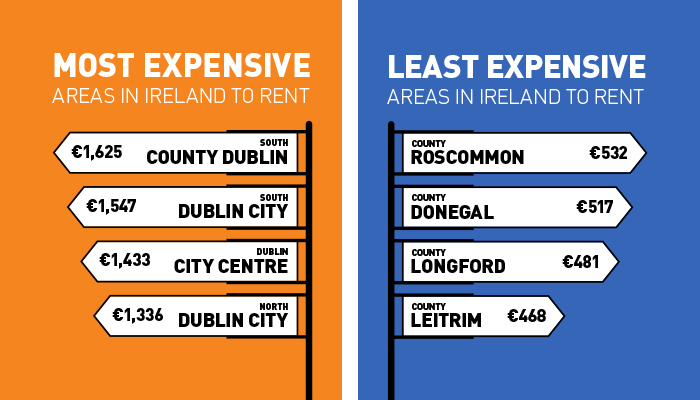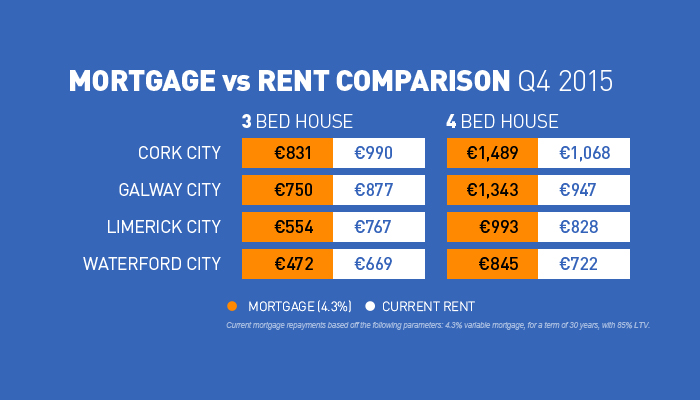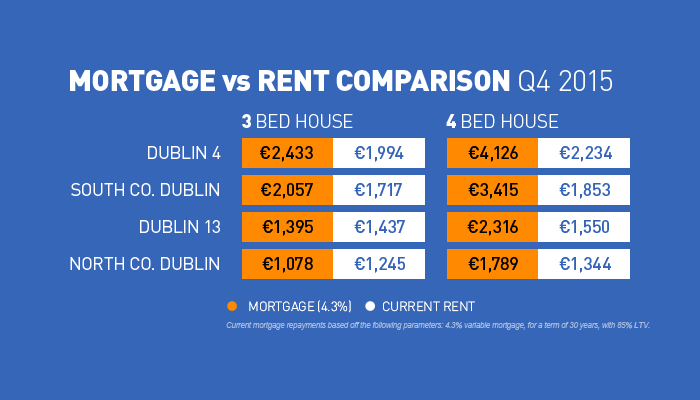Supply of homes to rent must be a top priority for the next Government
Daft Reports
- Ronan Lyons (House Price, Q1 2024)
- Ronan Lyons (Rental Price, Q4 2023)
- Ronan Lyons (House Price, Q4 2023)
- Ronan Lyons (Rental Price, Q3 2023)
- Ronan Lyons (House Price, Q3 2023)
- Ronan Lyons (Rental Price, Q2 2023)
- Ronan Lyons (House Price, Q2 2023)
- Ronan Lyons (Rental Price, Q1 2023)
- Ronan Lyons (House Price, Q1 2023)
- Ronan Lyons (Rental Price, Q4 2022)
- Ronan Lyons (House Price, Q4 2022)
- Ronan Lyons (Rental Price, Q3 2022)
- Ronan Lyons (House Price, Q3 2022)
- Ronan Lyons (Rental Price, Q2 2022)
- Ronan Lyons (House Price, Q2 2022)
- Ronan Lyons (Rental Price, Q1 2022)
- Ronan Lyons (House Price, Q1 2022)
- Ronan Lyons (Rental, Q4 2021)
- Ronan Lyons (House Price, Q4 2021)
- Ronan Lyons (Rental, Q3 2021)
- Ronan Lyons (House Price, Q3 2021)
- Ronan Lyons (Rental, Q2 2021)
- Ronan Lyons (House Price, Q2 2021)
- Ronan Lyons (Rental, Q1 2021)
- Ronan Lyons (House Price, Q1 2021)
- Ronan Lyons (Rental, Q4 2020)
- Ronan Lyons (House Price, Q4 2020)
- Ronan Lyons (Wealth, H2 2020)
- Ronan Lyons (Rental, Q3 2020)
- Ronan Lyons (House Price, Q3 2020)
- Ronan Lyons (Housing, July 2020)
- Ronan Lyons (Housing, June 2020)
- Ronan Lyons (Housing, May 2020)
- Ronan Lyons (Rental, Q1 2020)
- Ronan Lyons (House Price, Q1 2020)
- Ronan Lyons (Rental, Q4 2019)
- Ronan Lyons (House Price, Q4 2019)
- Ronan Lyons (Wealth, H2 2019)
- Ronan Lyons (Rental, Q3 2019)
- Ronan Lyons (House Price, Q3 2019)
- Pierre Yimbog (Rental, Q2 2019)
- Ronan Lyons (House Price, Q2 2019)
- Ronan Lyons (Wealth, H1 2019)
- Ronan Lyons (Rental, Q1 2019)
- Ronan Lyons (House Price, Q1 2019)
- Ronan Lyons (Rental, Q4 2018)
- Ronan Lyons (House Price, Q4 2018)
- Ronan Lyons (Wealth, H2 2018)
- Ronan Lyons (Rental, Q3 2018)
- Ronan Lyons (House Price, Q3 2018)
- Shane De Rís (Rental, Q2 2018)
- Ronan Lyons (House Price, Q2 2018)
- Ronan Lyons (Wealth, 2018)
- Ronan Lyons (Rental, Q1 2018)
- Ronan Lyons (House Price, Q1 2018)
- Ronan Lyons (Rental, Q4 2017)
- Ronan Lyons (House Price, Q4 2017)
- Ronan Lyons (Rental, Q3 2017)
- Ronan Lyons (House Price, Q3 2017)
- Katie Ascough (Rental, Q2 2017)
- Ronan Lyons (Wealth, 2017)
- Ronan Lyons (House Price, Q2 2017)
- Ronan Lyons (Rental, Q1 2017)
- Ronan Lyons (House Price, Q1 2017)
- Ronan Lyons (Rental, Q4 2016)
- Ronan Lyons (House Price, Q4 2016)
- Ronan Lyons (Rental, Q3 2016)
- Ronan Lyons (House Price, Q3 2016)
- Ronan Lyons (School Report, 2016)
- Conor Viscardi (Rental, Q2 2016)
- Ronan Lyons (Rail Report, 2016)
- Ronan Lyons (House Price, Q2 2016)
- Ronan Lyons (Rental, Q1 2016)
- Ronan Lyons (House Price, Q1 2016)
- Ronan Lyons (Rental, Q4 2015)
- Ronan Lyons (House Price, Q4 2015)
- Ronan Lyons (Rental, Q3 2015)
- Ronan Lyons (House Price, Q3 2015)
- Marcus O'Halloran (Rental, Q2 2015)
- Ronan Lyons (House Price, Q2 2015)
- Ronan Lyons (Rental, Q1 2015)
- Ronan Lyons (House Price, Q1 2015)
- Ronan Lyons (Rental, Q4 2014)
- Ronan Lyons (House Price, Q4 2014)
- Ronan Lyons (Rental, Q3 2014)
- Ronan Lyons (House Price, Q3 2014)
- Domhnall McGlacken-Byrne (Rental, Q2 2014)
- Ronan Lyons (House Price, Q2 2014)
- Ronan Lyons (Rental, Q1 2014)
- Ronan Lyons (House Price, Q1 2014)
- Ronan Lyons (Rental, Q4 2013)
- Ronan Lyons (House Price, Q4 2013)
- Ronan Lyons (Rental, Q3 2013)
- Ronan Lyons (House Price, Q3 2013)
- Ronan Lyons (Rental, Q2 2013)
- Ronan Lyons (House Price, Q2 2013)
- Ronan Lyons (Rental, Q1 2013)
- Ronan Lyons (House Price, Q1 2013)
- Ronan Lyons (Rental, Q4 2012)
- Ronan Lyons (House Price, Q4 2012)
- Lorcan Sirr (Rental, Q3 2012)
- Padraic Kenna (House Price, Q3 2012)
- John Logue (Rental, Q2 2012)
- Ronan Lyons (House Price, Q2 2012)
- Barry O'Leary (Rental, Q1 2012)
- Seamus Coffey (House Price, Q1 2012)
- Joan Burton (Rental, Q4 2011)
- Ronan Lyons (House Price, Q4 2011)
- Philip O'Sullivan (Rental, Q3 2011)
- Sheila O'Flanagan (House Price, Q3 2011)
- Rachel Breslin (Rental, Q2 2011)
- Constantin Gurdgiev (House Price, Q2 2011)
- Cormac Lucey (Rental, Q1 2011)
- Eoin Fahy (House Price, Q1 2011)
- Lorcan Roche Kelly (Rental, Q4 2010)
- Ronan Lyons (House Price, Q4 2010)
- John Fitzgerald (Rental, Q3 2010)
- Patrick Koucheravy (House Price, Q3 2010)
- Gary Redmond (Rental, Q2 2010)
- Jim Power (House Price, Q2 2010)
- Jill Kerby (Rental, Q1 2010)
- Brian Lucey (House Price, Q1 2010)
- Michael Taft (Rental, Q4 2009)
- Alan McQuaid (House Price, Q4 2009)
- Dr. Charles J. Larkin (Rental, Q3 2009)
- Emer O'Siochru (House Price, Q3 2009)
- Ronan Lyons (Rental, Q2 2009)
- Oliver Gilvarry (House Price, Q2 2009)
- Brian Devine (Rental, Q1 2009)
- Dr. Liam Delaney (House Price, Q1 2009)
- Gerard O'Neill (Rental, Q4 2008)
- Ronan Lyons (House Price, Q4 2008)
- Dr. Stephen Kinsella (Rental, Q3 2008)
- Moore McDowell (House Price, Q3 2008)
- Shane Kelly (Rental, Q2 2008)
- Fergal O'Brien (House Price, Q2 2008)
- Eoin O'Sullivan (Rental, Q1 2008)
- Dermot O'Leary (House Price, Q1 2008)
- Dan O'Brien (Rental, Q4 2007)
- Frances Ruane (House Price, Q4 2007)
- John McCartney (Rental, Q3 2007)
- Ronnie O'Toole (House Price, Q3 2007)
- Ronan Lyons (Rental, Q2 2007)
- Constantin Gurdgiev (House Price, Q2 2007)
- Fintan McNamara (Rental, Q1 2007)
- Rossa White (House Price, Q1 2007)
- Geoff Tucker (Rental, Q4 2006)
- Damien Kiberd (House Price, Q4 2006)
- Pat McArdle (House Price, Q3 2006)
- Marc Coleman (House Price, Q2 2006)
- David Duffy (House Price, Q1 2006)
- Austin Hughes (House Price, Q4 2005)
- David McWilliams (House Price, Q2 2005)

9th Feb 2016
Ronan Lyons, Daft's in-house economist, commenting on the latest Daft research on the Irish property market.
Three months ago, the commentary to the previous Rental Report highlighted the importance of looking at quantities – the number of homes available to rent – rather than prices. This was in the context of calls for controls on rent increases. Blunt attempts to limit increases in rents would do nothing to address the lack of homes to rent and – like other price controls – potentially make the problem worse, rather than better, by limiting investment in new homes.
How do things look three months on? With the next election just a couple of weeks away, what are the key messages the next Government should take away about the rented sector? And are the actions it needs to take?

As ever, the initial focus will be on rents and how they've changed. There, a clear message emerges over the last four years – the 'urban premium' has grown and grown sharply. While Dublin rent inflation has been lower than that in the rest of the country for much of the last year, this marks only a small blip in a longer-term trend over the last five years. That trend has seen rents in Dublin 2 – the archetypal urban market – grow far faster than those in Leitrim, one of the cheapest rural markets.
The figure below shows how average rents in Dublin 2 compare to rents in Leitrim since 2006. Ten years ago, in 2006, rents in Dublin 2 were roughly 2.8 times those in Leitrim and by 2010, that ratio had changed very little. Since then, though, Dublin 2 rents have grown so that they are now close to 3.7 times those in Leitrim.

What does this growing urban premium mean? In most developed countries, it is politically uncontroversial to say that cities are where the bulk of jobs are created – and thus where population growth is centred. Ireland was, temporarily, an exception to this rule, as loose credit meant there were jobs and homes in towns, big and small.
The end of the bubble, though, has refocused Irish people – young people in particular – on what kind of locations offer a good 'labour market amenity', i.e. jobs. The bigger the city, the better the labour market amenity and many young Irish people have decided that even Ireland's biggest city is not big enough and gone abroad in search of safer employment prospects.
For those that have remained, though, as rental trends show, the demand has been driven by cities and their surrounding areas. Whereas rents in Dublin are up 43% since their lowest point in 2010, and rents in Cork city have increased 37%, there has been just a 6% increase in Donegal rents and a 7% increase in Mayo.

Unsurprisingly, if the urban areas are where demand for rental homes has concentrated, it is also where the lack of availability is most acute. In Dublin, between 2008 and 2012, there were an average of almost 5,200 properties available to rent at any one time. Since 2012, this has fallen again and again. As of February 1st, there were fewer than 1,400 properties available to rent – in a city of over half a million households, more than a third of whom rent.
But the lack of supply has not been limited to Dublin or even to the cities. In the same period, the total number of properties available to rent in the four other cities – Cork, Galway, Limerick and Waterford – has fallen from an average of 2,000 to just over 300. And outside the cities, the number has fallen from 10,600 to just 1,900.
Nationwide, there were just 3,600 homes available to rent on February 1st, by far the lowest total since the series started in 2006. This lack of availability stems from a lack of construction activity at a time when Ireland's population has grown year-on-year throughout the last decade.
Some of the reasons given for this lack of construction sound plausible at first glance but don't stack up. For example, it is often said that banks won't lend like they used to, or that Irish developers are either too bust or too greedy to build. But none of that explains why Dublin in particular is witnessing such a boom in commercial construction activity, especially new office space. Or why international developers, who work off relatively tight margins in many other countries, can't make the numbers stack up in Ireland.

So the key takeaway for the new government is about understanding the unique blockages holding back supply in the Irish residential housing market, especially in building new apartments. The National Competitiveness Council has committed to benchmarking construction costs in Ireland to our peers. The results of this exercise will hopefully act as an action plan for bringing costs, minimum standards and modes of certification back in line with best practice.
If the next Government sets this as a priority early in its term, by the time it returns to face the voters again, it should be able to point to an end to the rental crisis as one of its main achievements.

